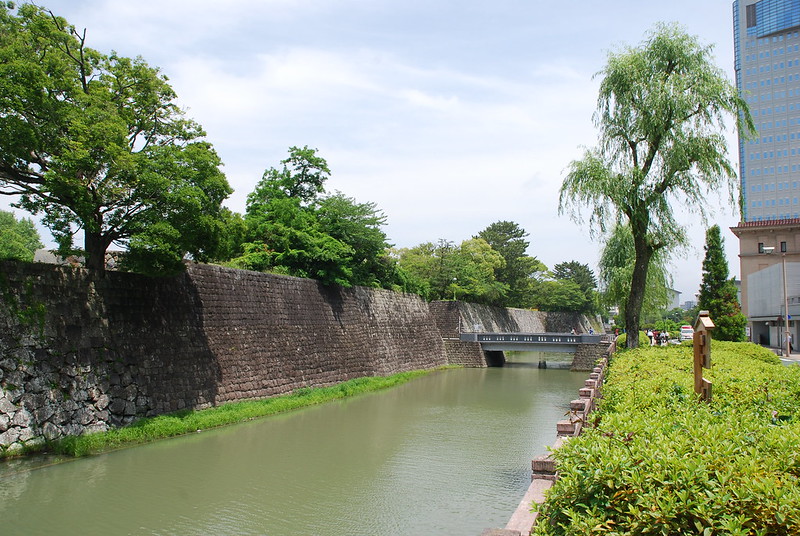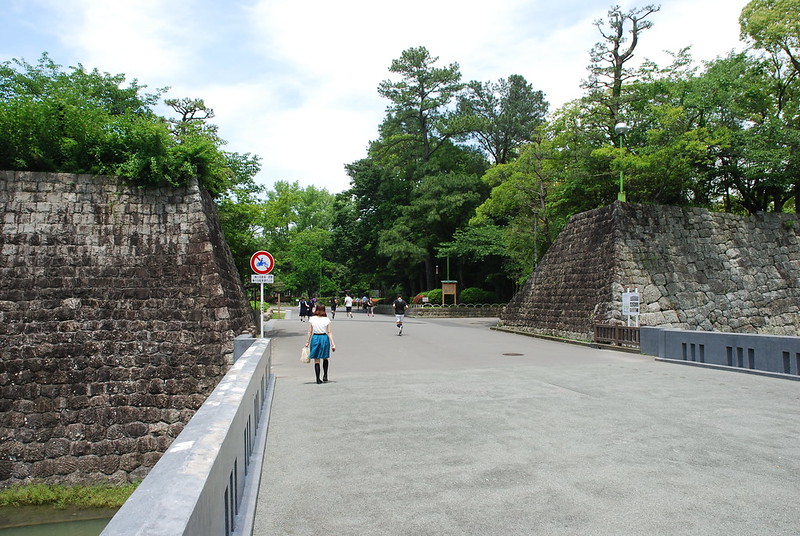二ノ丸御門は二ノ丸大手門とも呼ばれる門で、三の丸から二の丸に入るための正面出入口でしたが、1957年(昭和32年)に埋められてしまいました。
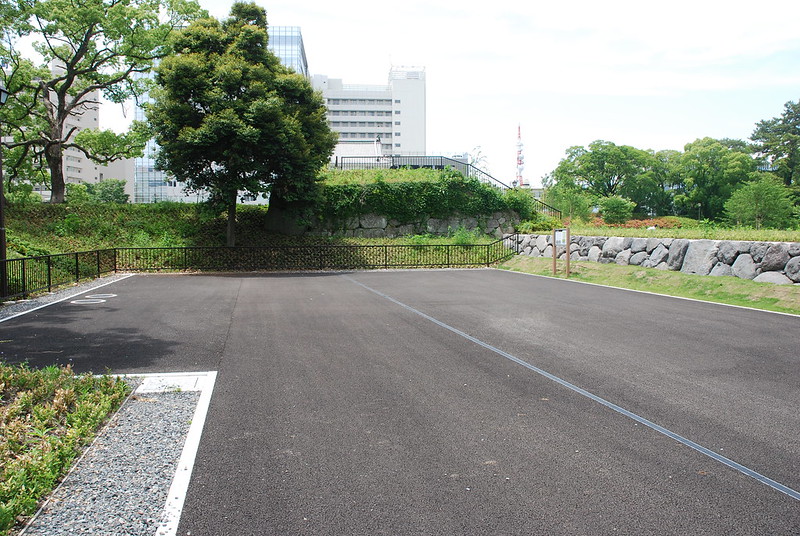
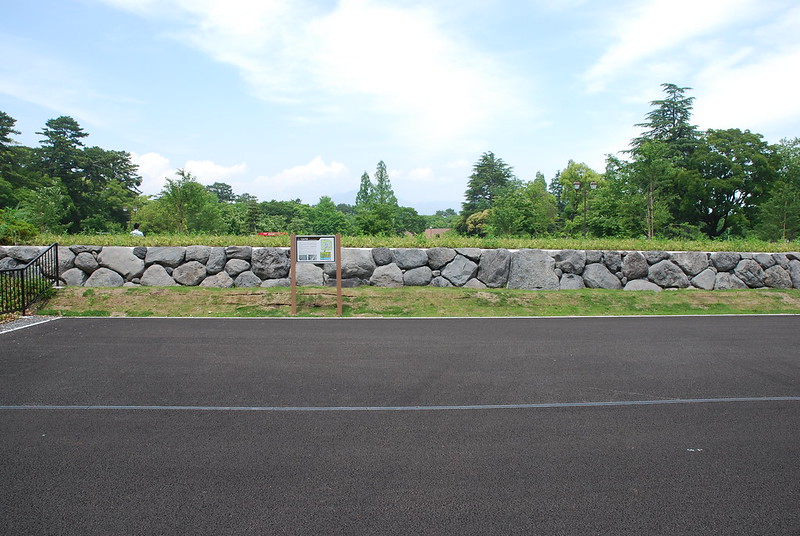
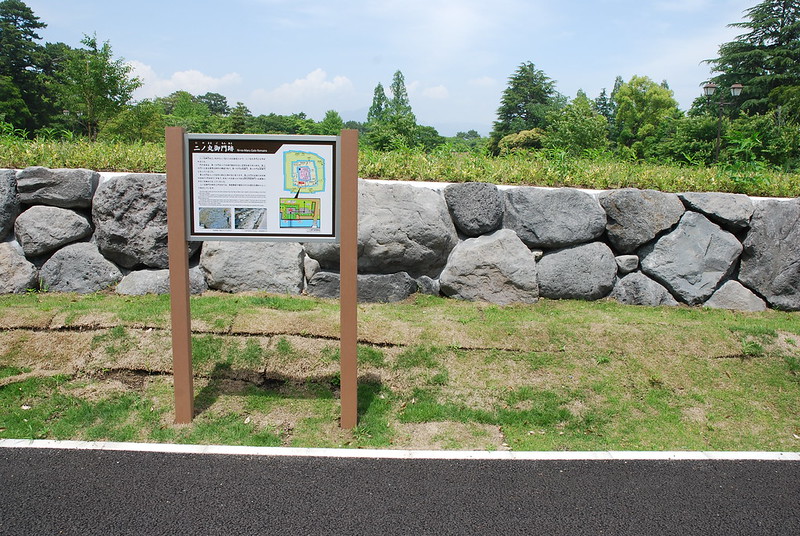
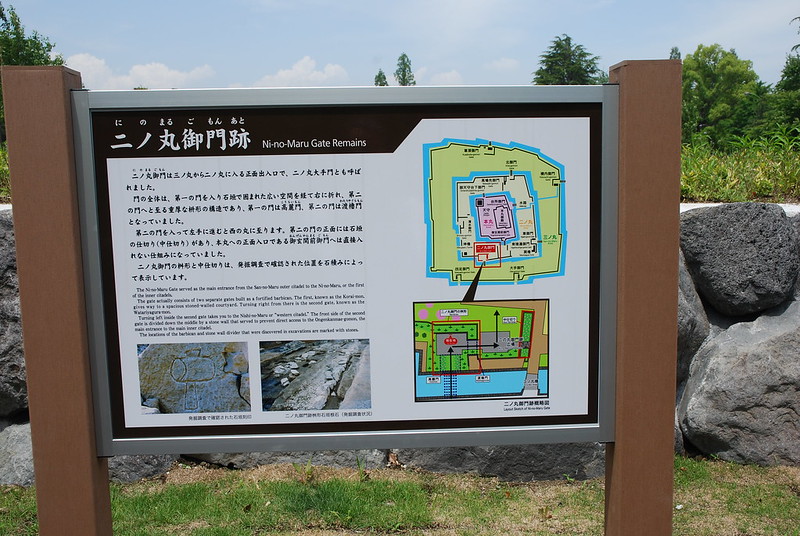
二ノ丸御門跡(にのまるごもんあと)
二ノ丸御門(にのまるごもん)は三ノ丸から二ノ丸に入る正面出入口で、二ノ丸大手門とも呼ばれました。 門の全体は、第一の門を入り石垣で囲まれた広い空間を経て右に折れ、第二の門へと至る重厚な枡形の構造であり、第一の門は高麗門(こうらいもん)、第二の門は渡櫓門(わたりやぐらもん)となっていました。
第二の門を入って左手に進むと西の丸に至ります。第二の門の正面には石垣の仕切り(中仕切り)があり、本丸への正面入口である御玄関前御門(おんげんかんまえごもん)へは直接入れない仕組みになっていました。
二ノ丸御門の枡形と中仕切りは、発掘調査で確認された位置を石積によって表示しています。Ni-no-Maru Gate Remains
The Ni-no-Maru Gate served as the main entrance from the San-no-Maru outer citadel to the Ni-no-Maru, or the first of the inner citadels. The gate actually consists of two separate gates built as a fortified barbican. The first, known as the Korai-mon, gives way to a spacious stoned-walled courtyard. Turning right from there is the second gate, known as the Watariyagura-mon. Turning left inside the second gate takes you to the Nishi-no-Maru or "western citadel." The front side of the second gate is divided down the middle by a stone wall that served to prevent direct access to the Ongenkanmae-gomon, the main entrance to the main inner citadel. The locations of the barbican and stone wall divider that were discovered in excavations are marked with stones.
この正面に第一の門である高麗門があり、その向こう側に橋があったようです。
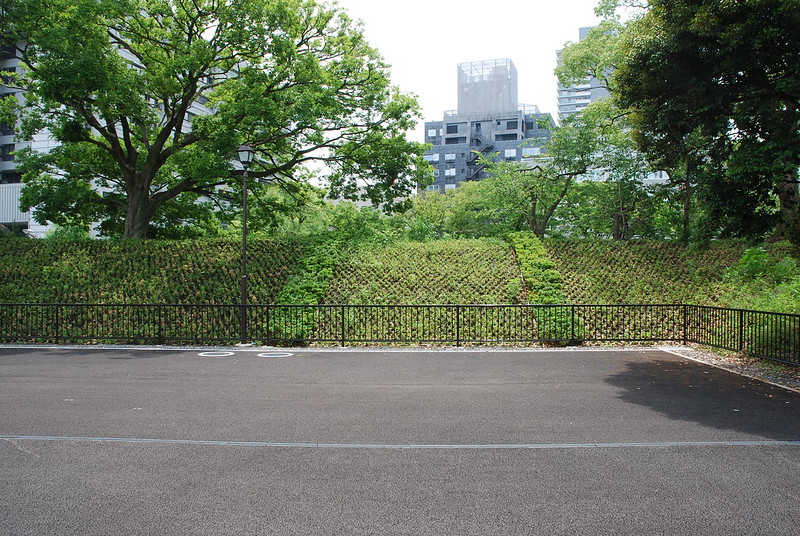
外側にまわってみました。
たしかに石垣の積み方が異なっていますね。
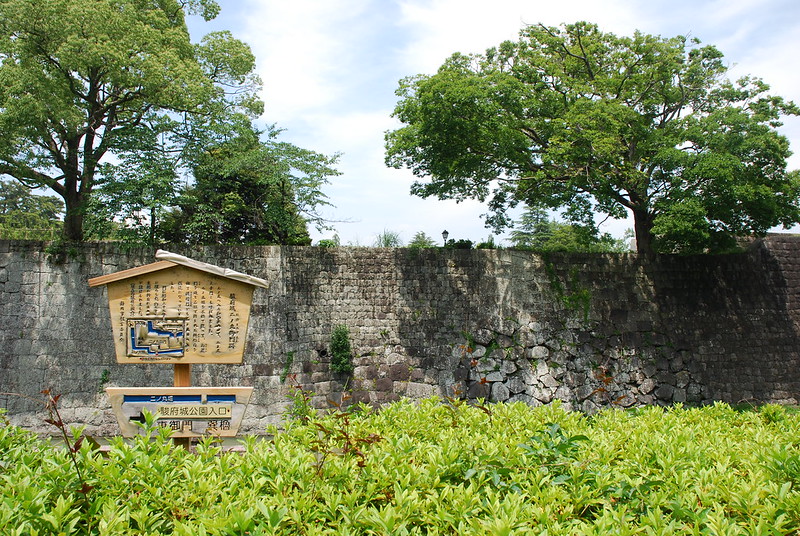
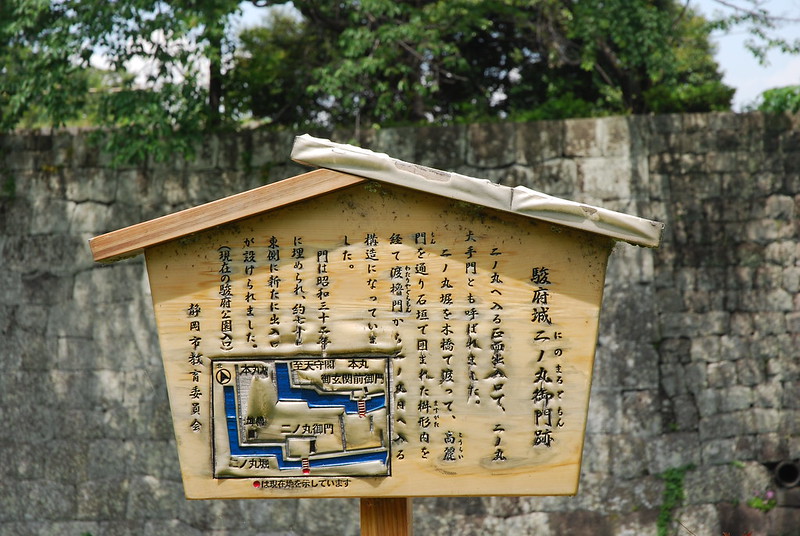
駿府城二ノ丸御門(にのまるごもん)跡
二ノ丸へ入る正面出入口で、二ノ丸大手門とも呼ばれました。
二ノ丸堀を木橋で渡って、高麗門を通り石垣で囲まれた枡形内を経て渡櫓門から二ノ丸内へ入る構造になっていました。
門は昭和三十二年に埋められ、約七十m東側に新たに出入口が設けられました。
(現在の駿府公園入口)静岡市教育委員会
奥に見えるのが現在の公園出入口(二ノ丸御門橋)です。
